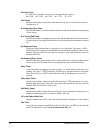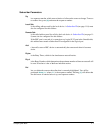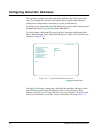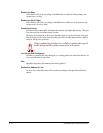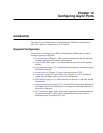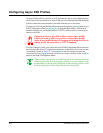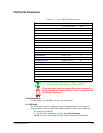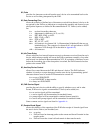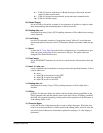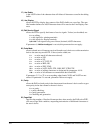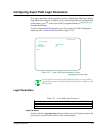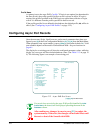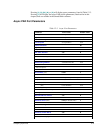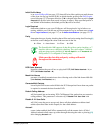
12-4 SmartSwitch 1800 4.0 User Guide, Rev 01
02, Echo
provides for characters received from the user's device to be transmitted back to the
device as well as being interpreted by the PAD.
03, Data Forwarding Char
allows the selection of defined sets of characters received from the user's device to be
recognized by the PAD as an indication to complete the assembly and forward a com-
plete packet sequence as defined in Recommendation X.25. Values (can be added)
are:
0
= no data forwarding character.
1
= alphanumeric characters (A-Z, a-z, 0-9).
4
= ESC, BEL, ENQ, or ACK.
8
= DEL, CAN, or DC2.
16
= ETX or EOT.
32
= HT, LF, VT, or FF.
64
= all characters in columns 0 & 1 of International Alphabet #5 that are not
included above. (The contents of columns 0 & 1 are equivalent to ASCII
characters NUL through US in the table in Appendix E.)
127
= all characters.
04, Idle Timer Delay
allows selection of an interval between successive characters received from the user's
device, which when exceeded will cause the PAD to terminate assembly of a packet
and forward it as defined in Recommendation X.25. If expiration of the timer occurs
before the forwarding size of the data packet is reached, the PAD forwards the data
packet to the remote DTE.
05, Ancillary Device Control
allows flow control between the PAD and the user's device. The PAD indicates
whether it is ready to accept characters from the user device by transmitting special
characters that are used to switch DTE transmission on and off.
0
= no use of XON/XOFF.
1
= use XON/XOFF in data transfer.
2
= always use XON/XOFF.
06, PAD Service Signal
provides the user's device with the ability to specify whether or not, and in what
format, PAD service signals are transmitted. Values (can be added) are:
0
= no service signals will be transmitted.
1
= service signals will be transmitted in standard format.
4
= prompt signal will be transmitted in standard format (asterisk).
5
= service and prompt signals will be transmitted in standard format.
Some common service signals are listed in Appendix A.
07, Receive Break Signal
allows the selection of the operation of the PAD after receipt of a break signal from
the user's device.Values (can be added) are:
0
= no action.
1
= PAD will send an interrupt packet to the remote end but will remain in data
transfer mode.
2
= PAD will reset the virtual call and remain in data transfer mode.



